During my completely unintentional journey to sample pretty much every SLR Canon ever made, I’ve recently been making my way through the rather Marmite (Vegemite for those on the sunnier side of the world) T series of cameras. I started out with no affinity nor love for this particular range but having now spent so much time with the T90, T80 and T70 I’ve grown to really appreciate the important role they played in the awkward transition from manual focus, manual everything SLR’s to the revolutionary EOS juggernaut of the 1990’s. These are cameras that may not immediately tickle your nostalgia or retro nerve endings, but when you use them they really grow on you.
Currently, the T70 doesn’t seem to be sought after, it isn’t hard to come by and nor is it in any way expensive. I genuinely believe that these factors combine to create what really is one of the most attractive propositions if you wanted to get in to manual focus SLR photography on the cheap. However, the question remains – why does no one want one of these when the prices of A series cameras are now in the “I have too much money and no common sense at all” price bracket? Is the T70 a future classic and an undiscovered gem? I took one for a walk with a roll of Foma Pan 100 to find out.
In this review:
- Finally, an actual A series upgrade?
- What’s that about cheap prices?
- Features and creature comforts
- The T70 in use
- Conclusions and learning
Finally, an actual A series upgrade?
The T50 launched in 1983 as the spiritual successor to the incredibly successful AE1 Program, taking the program concept to the extreme by removing all other shooting modes and controls. It was program mode or nothing! I’ve always thought the T50 was a difficult camera to justify the existence of both then and now. The AE1 Program remained on sale for several more years alongside the T50 and, given the choice, you’d choose the AE1 every time. The T50 had an odd mix of features like a power winder but yet it still had manual rewind. For similar money, if not slightly less, the AE1 still offered you a decent experience, a capable program mode and the added bonus of control over your shooting speed with it’s shutter priority mode.
Canon didn’t make too much of a dent in the market with the T50 and knew they’d need something more compelling to tempt both AE1 and A1 owners to upgrade to and enjoy the luxury of new technologies like liquid crystal displays, updated metering algorithms, more convenient batteries and the ergonomic joys that plastic moulding gave.
The T70 was that camera. A lot was riding on the launch of an enthusiast level camera and it was going to need to have some fairly broad shoulders to take the weight of expectation and Canon knew it. The T70 was to be the futuristic, latest technology, do it all, go-to camera for those new to the T series or looking for an upgrade. In reality, the T70 and T90 were the only bodies that were going to offer the professional and serious amateur segment anything to be remotely tempted by. We shan’t mention the T80…

And the T70 was indeed quite the tempting affair. It was a well featured, competitively priced camera that didn’t feel like it was something of an experiment or had been deliberately crippled in some way to meet a target price. As with each of the T series cameras, it introduced something brand new in terms of design that was the absolute latest in technological developments.
It is difficult for those of us who weren’t alive in the 1970’s to truly understand how something as utterly ubiquitous as an LCD display was once the absolute cutting edge. LCD’s consume very little power and can be configured to display pretty much anything you like. Their low power consumption meant displays could stay on even when a device was off (like showing a frame counter) and the ease with which they could be configured by designers allowed cameras to have all their shooting information in one convenient place. Before LCD’s this was quite literally impossible. There was nothing available to use as a display unless you fancied bolting Sinclair’s worlds smallest CRT TV to your face for a laugh.

The concern in the early 1980’s was that LCD’s were thought to only have a lifespan of around 5 years and then they would need to be replaced by a service centre. Some do indeed fail, you see the tell tale black “spillage” on them, but incredibly many survive completely intact and fully functional to this day – not a bad achievement getting an extra 35 years service out of something meant to last only 5.
Looking back, the top deck LCD display is very easy to overlook as we’re just so used to them – they’ve always just been there, right?! A holistic view of the T series shows how right Canon were getting it, just not on one individual body. The 70 had the top LCD, T80 introduced AF and scene modes and the T90 just smashed ergonomic design and convenient control dials out of the park. The T90 did indeed integrate all of the T series developments to that point save for AF.
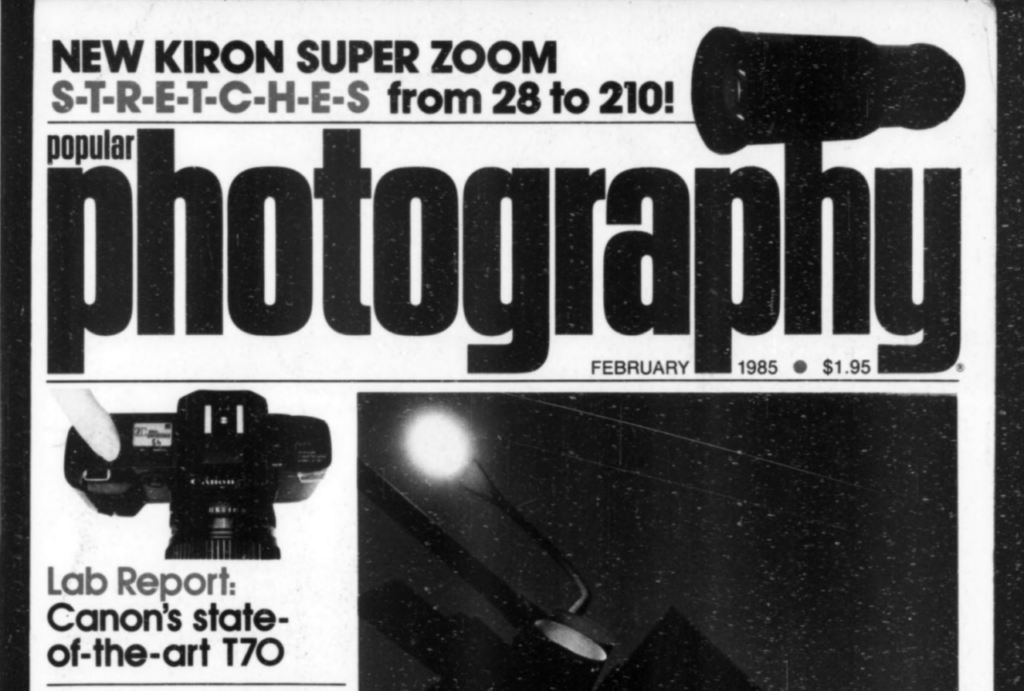
Archive.org have an incredible archive of “Popular Photography” magazine and the depth of their reviews is absolutely incredible. When they reviewed a camera, they reviewed it down to the last cog and wheel – quite literally. They took each camera completely to pieces to determine how well built it was, how long it would last, any interesting design features and how repairable it was. That kind of attention to detail I have not seen before in a review, I really wish there was something similar today – just look at the sheer brilliance of the teardown below:
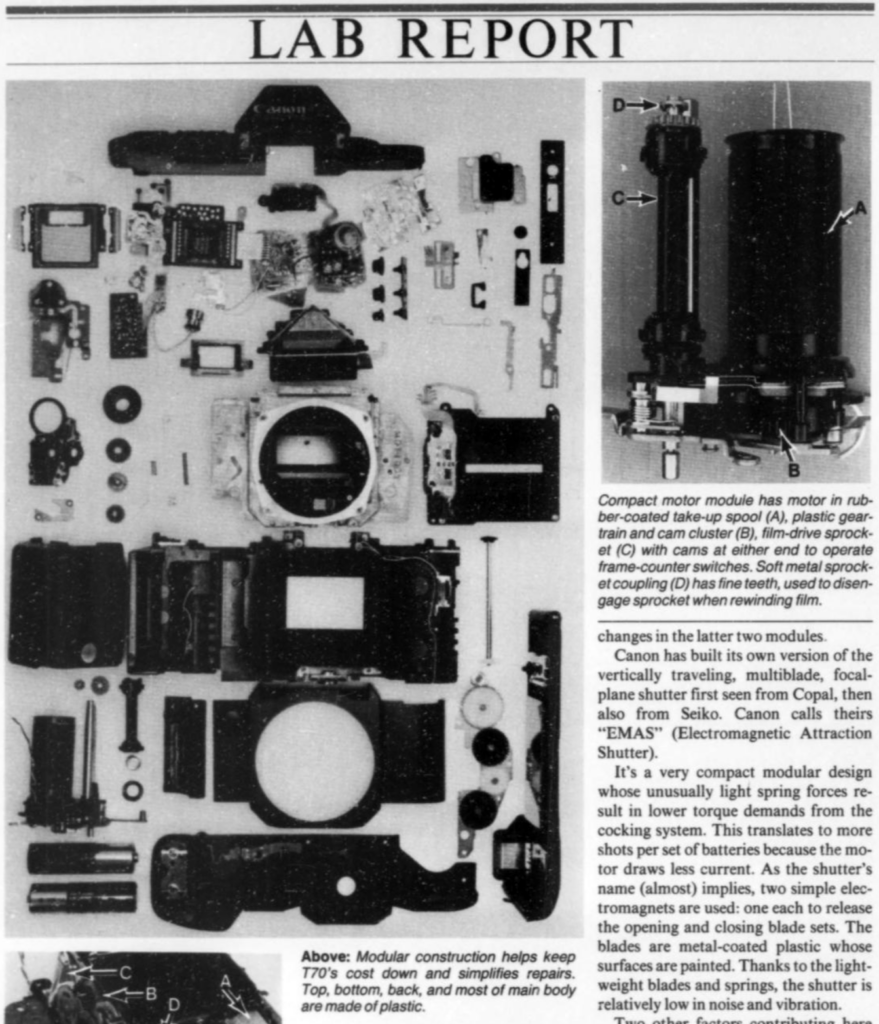
The review concludes that the T70 is a very capable, well built camera with a great specification. This, then, was a highly regarded imaging tool in 1985 and was seen as a worthy investment of your money. Talking of investment, what kind of money are we looking at in todays market? Well, I’m glad you asked…
What’s that about cheap prices?
If you look around, you can always find someone trying their luck with second hand kit. This time I was surprised to find that London Camera Exchange are the worst offenders. What on earth they’re thinking trying to charge £90 for a T70 and a lens you can pick up off eBay for £5 is utterly mind bending. Please, if you want a T70, don’t give these people your money.
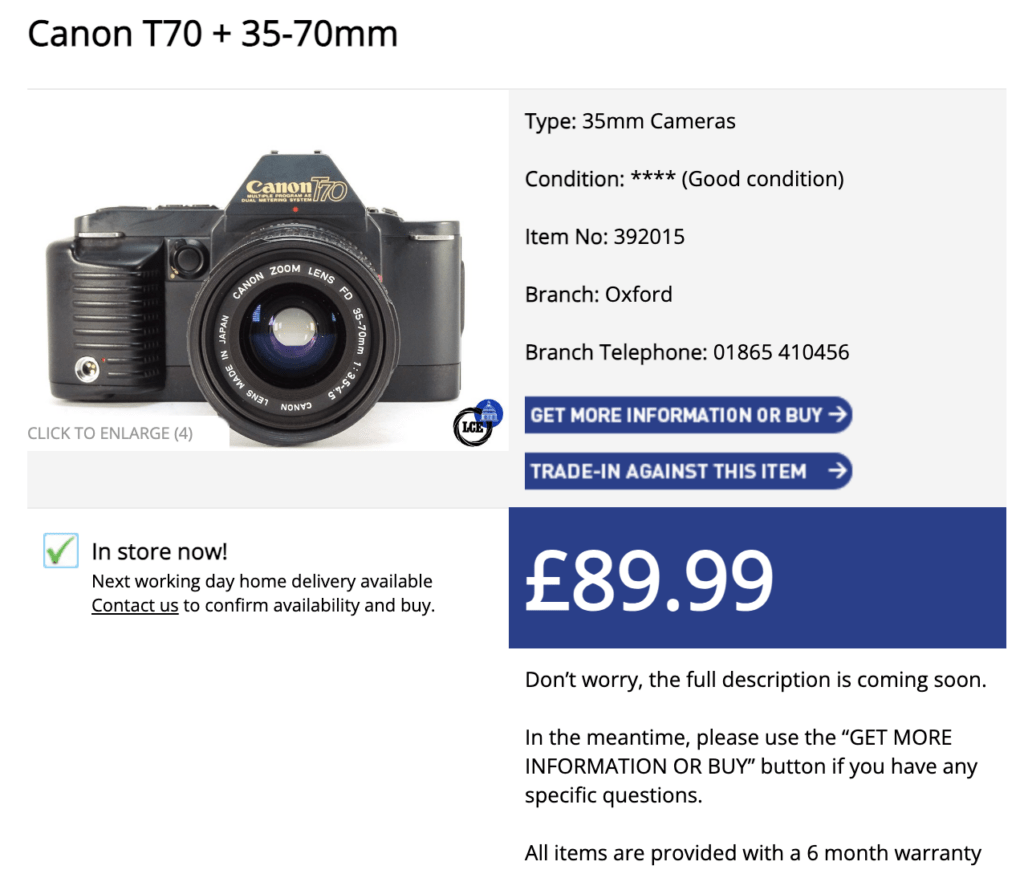
I paid the princely sum of £20 all in for my T70 and that was with an original case/bag and it looks as new as the day it left the factory. For once I bought a camera body that not only worked but didn’t look like it had been dipped in treacle and rubbed on a few cats before being posted out.
£20 is actually quite a high price in the current market. You can easily pick one up for half that price. I followed a few on eBay recently and some examples went for £10 all in, some attracted no bids at all and others went for around £15 ish depending on whether they had accessories, manuals or a lens. Remember also, these take two AA batteries, so it isn’t like you’ve got to nip down the shops or Amazon yourself a weird CR2 battery or similar as were used by later Canons or the even weirder 6v specials used by the A1 and AE1.
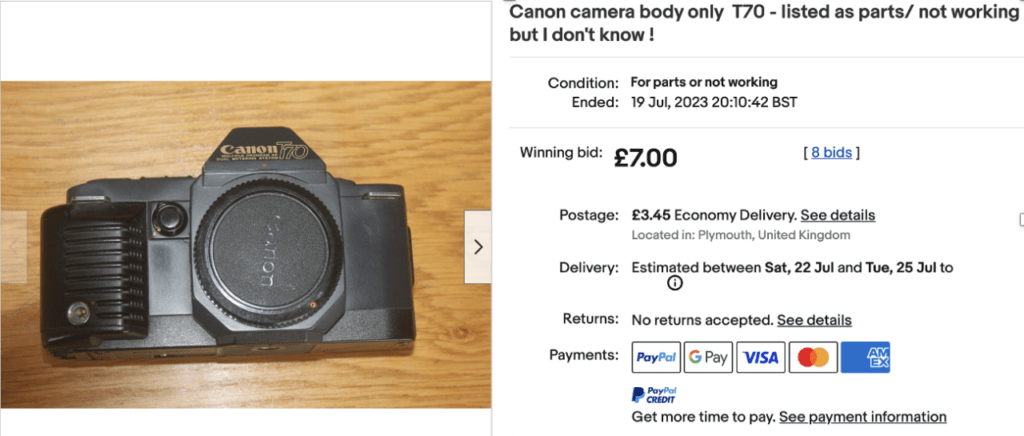
If I hadn’t already bought one, I’d have been on this auction straight away. Unbelievably, the listing shown below had a flash, lens and original manuals all for £15. That, my friends, is value. Right now, I cannot think of a better value FD compatible camera. Buy one, review over.
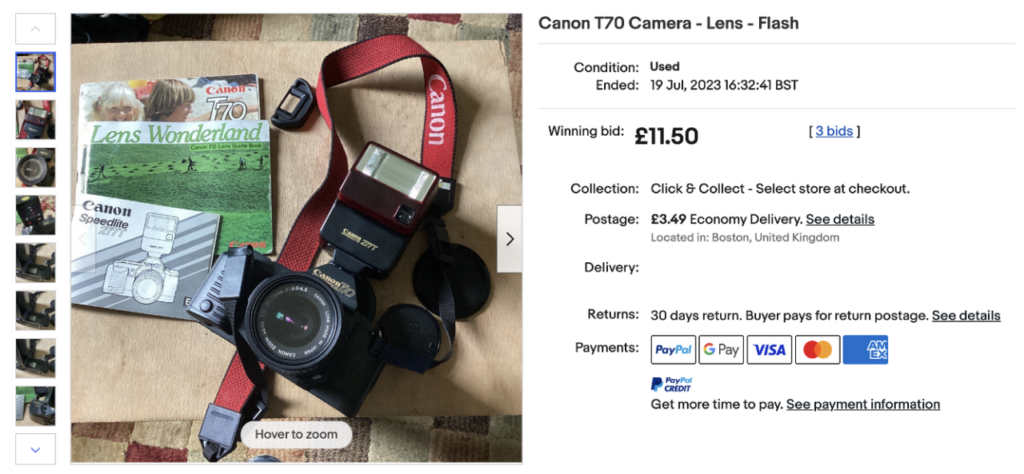
As an aside, these cameras usually came with an FD zoom lens in the range 35-70mm. Those lenses are the absolute cheapest FD models you can buy right now and again are absurd value. I recently picked one up, fully boxed, for £5. Yes it had some fungus on the front element but that took all of 15 minutes to take the front element off, splash a few chemicals on and pop back together. If you don’t want the hassle, £10-15 will see you with a perfectly working copy in your hands. There is so much value to be had here.
Features and creature comforts
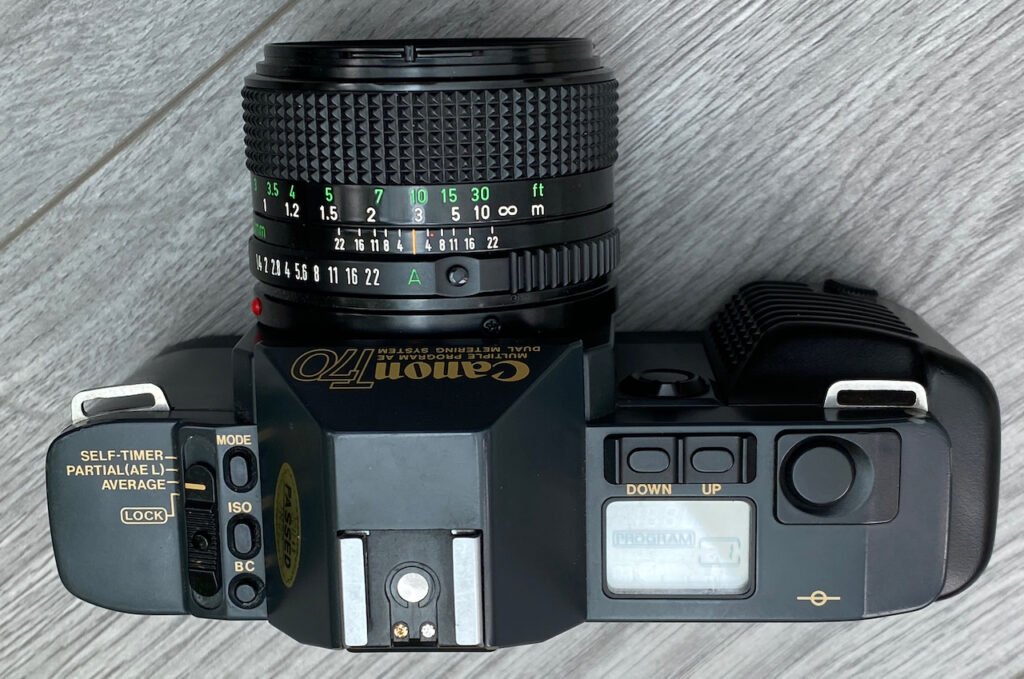
Using a T70 could not be simpler, just drop two AA batteries in the hand grip, flip the back open and put a film in, close the back door and it’ll automatically wind on to the first shot ready to go. The only stumbling block here is that Canon didn’t add DX coding to the T70 so you do have to remember to set the ISO after loading the film, failing to do so will result in incorrect exposure for your whole roll. This isn’t a difficult task, one press of the ISO button and a couple on the up and down buttons will sort it out.
That top LCD really is rather useful. It’ll show you when a film is inserted in the camera and how many shots you’ve taken so far – a good thing because a T70 will also happily fire off the shutter without a film in so it helps to be able to check. It also displays which mode the T70 is in and some other information depending on how you’re using it.
Ergonomically the T70 is definitely a step up from the older A series. The grip is far superior and oddly the plastic body feels nicer in the hand. Gone are the excessively squared off corners of the AE1 and some real thought has started to go in to how people actually hold the camera. Don’t get me wrong, it’s not perfect like the T90 grip, but it definitely feels more secure in the hand and is more comfortable when being used for longer periods of time.

There are a couple of oddities with the T70, the first being a button on the front of the body which in normal use is almost entirely pointless. It serves the exact same purpose as half pressing the shutter and presumably is there because the T70 has a nasty habit of switching the viewfinder display off instantly when you take your finger off the shutter button – a side effect of using LED lighting which consumes more power. By pressing the front button both the top lcd and viewfinder display will come to life and show you what settings you’re currently using.
I found that the T70 will shoot until the film roll doesn’t move any more which gave me 38 shots on a 36 exposure film. Use this feature with caution, though, because the last shot is so close to the film can that you can very easily chop off part of your last frame when spooling the film for development. I used a JOBO daylight tank which cuts the film off for you and it murdered the last frame on the roll.
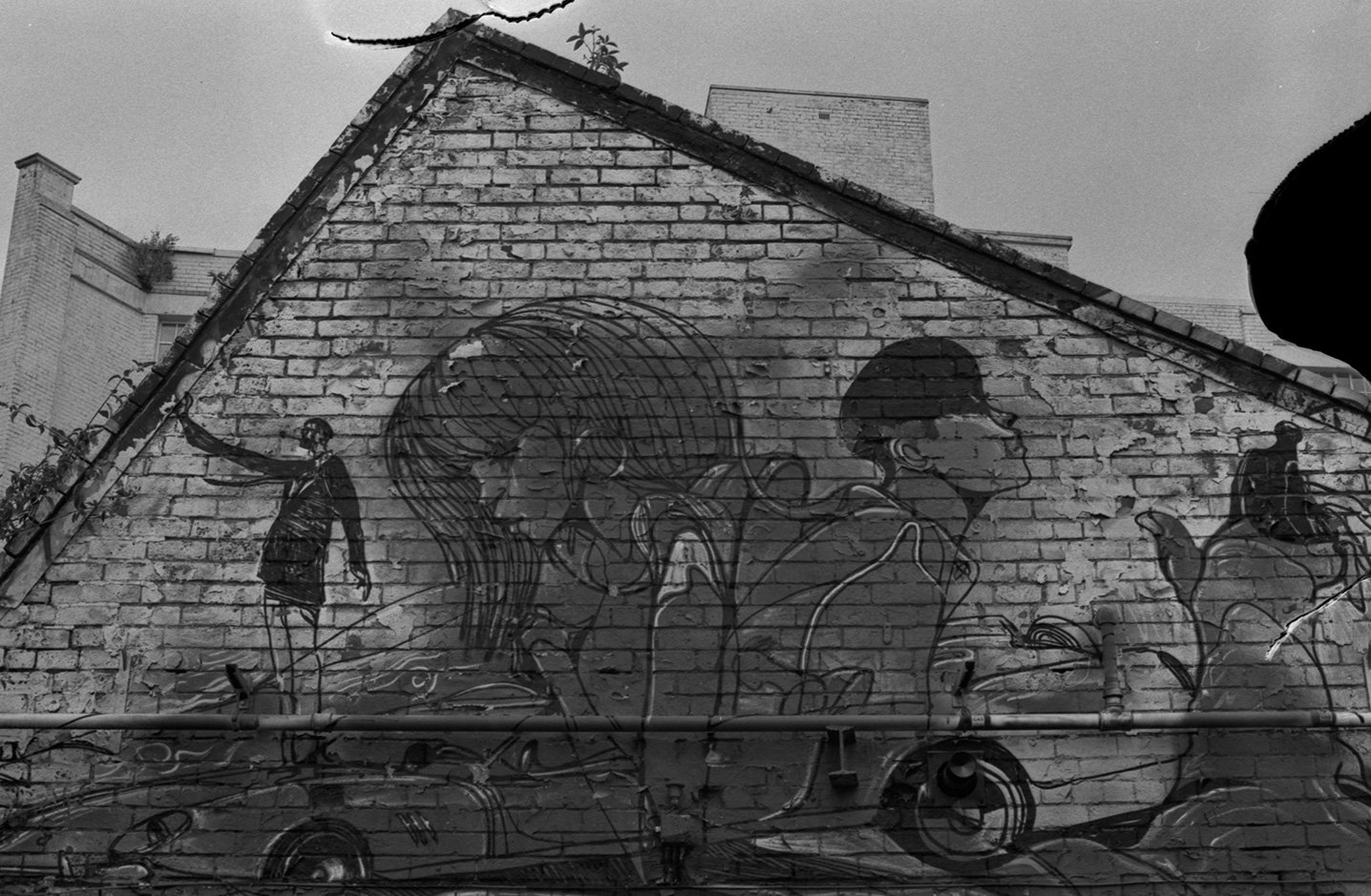
The T70 in use

It’d be really easy to just write “I like the T70, it’s very nice” and be done with it, but I think it makes more sense to compare and contrast with the AE1 Program that this was destined to replace.
The T70 is a heavy camera – noticeably so. I’ve spent a long time recently shooting with the EOS 300X which has become my go-to street camera due to its tiny size and great performance. Switching to the T70 is quite the shock to the wrist – we’re not talking T90 or EOS 1n heavy here, they weigh the same as a small child, but its certainly a chunky unit of a camera.
The grip is a two finger design, your little finger naturally sits under the body providing extra support whilst your index finger is on the shutter button which has a much longer and softer action than those found in the AE1 Program and also later EOS series cameras.
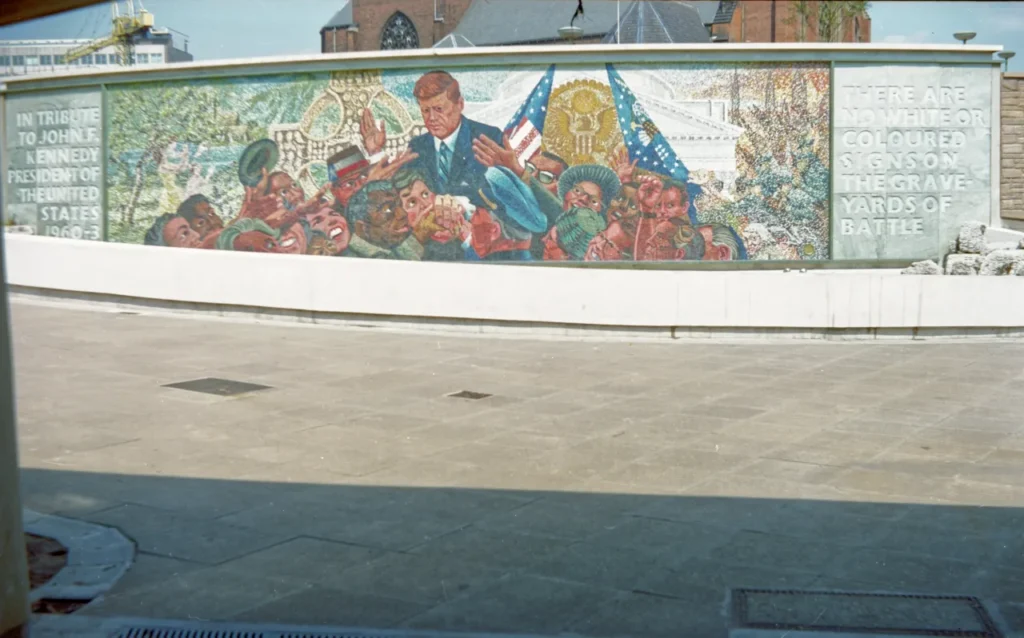
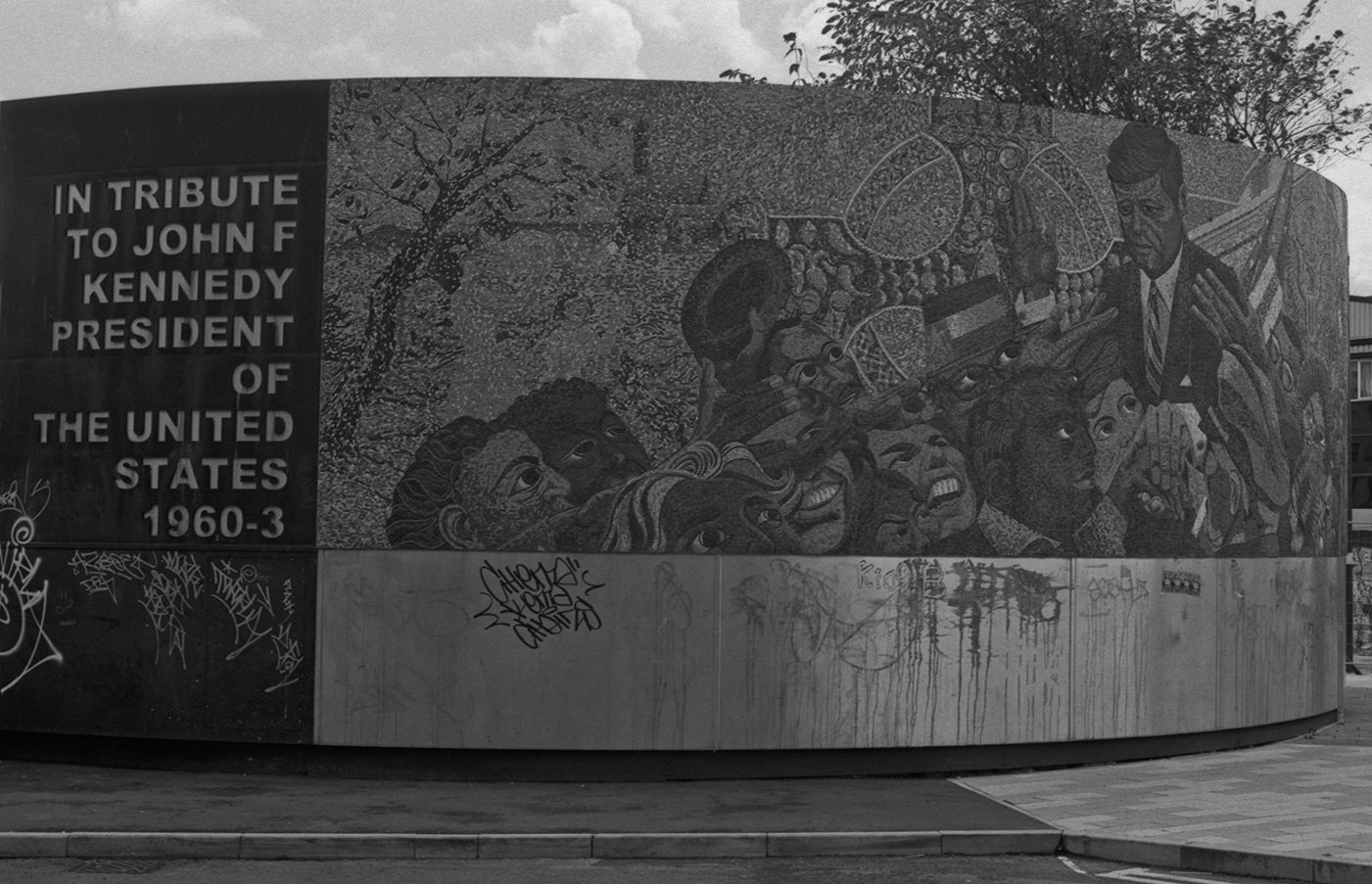
The thing I appreciated most when using the T70 was the viewfinder. Like most FD compatible bodies, the viewfinder is just one big clear piece of glass with an excellent focussing screen that allows you uncluttered vision of your frame and rapid focus. The T70 is a cut above earlier bodies because of the simply superb brightness and clarity of the information displayed within. The F stop is crisp, clear and has a party trick where it subtly changes brightness to adapt to the amount of light available. I’m fairly sure we all thought Apple introduced this feature to the world with their automatic screen brightness but no, Canon were doing it in 1984.
One thing I can say for certain is it isn’t a quiet camera by any means. It omits a high pitched noise when you engage the meter on a half shutter press, perhaps this is a sign of old capacitors or other circuitry but who knows. The shutter itself though is a very hearty clunk which is followed by a really loud whine and whirr as the film is advanced. It’s not off putting by any means but its not a refined, quiet machine that you’d want to use in situations that require some discretion. I wouldn’t have wanted to fire this thing off during a 1980’s wedding ceremony that’s for sure.
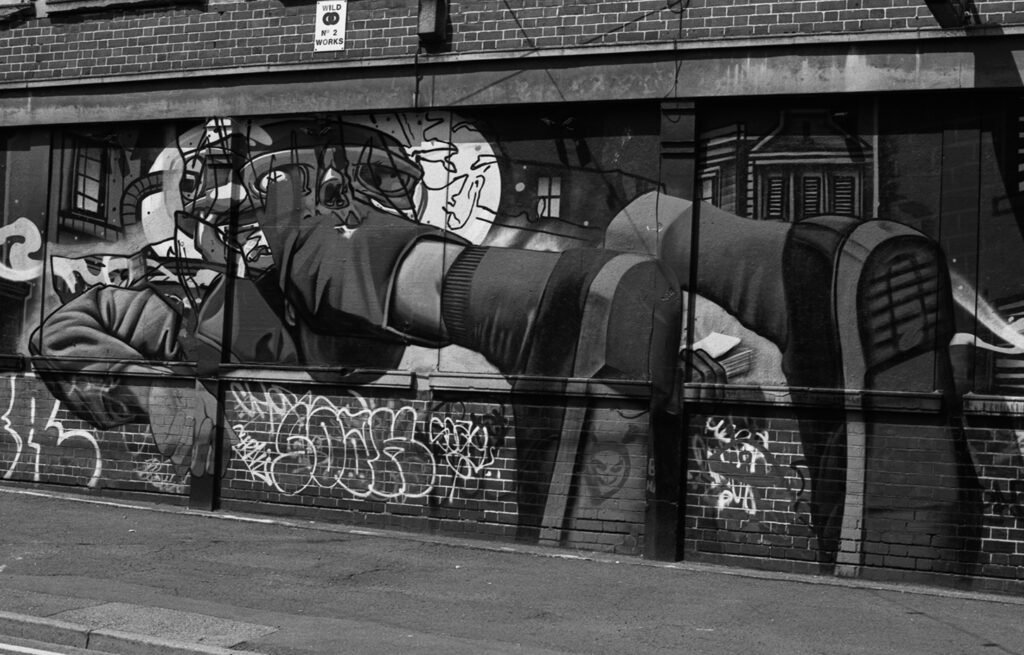
Overall, the T70 was a really enjoyable shooting experience because I simply started to forget it was there. The level of automation offered means you can frame up a shot, half press the shutter, glance to the right to check the F stop is reasonable and fire away. You’re then already looking around for the next shot. Since reviewing the T90 I’ve had complete confidence in the program modes on these Canons and once again the T70 came out with perfect results. Regardless of scene or lighting it got the exposures bang on the money every single time. Coupled with Foma 100 and an FD 50mm F1.4 I got some of the sharpest, cleanest film images I have ever taken.
Is it better than an A series? Should people have upgraded for any particular reason back then? I think the answer is a clear and firm “no” but that’s only because I don’t think there is a right answer here 40 odd years later as to which one beats the other. It’s actually the wrong question to ask.
The difference between whether to buy and shoot the T70 or an AE1 Program today is actually one of what kind of experience you’d like. How manual do you want to get? How tactile must film shooting be or not be before you’re comfortable to forget the machine and concentrate on the shots? How important is that magical film advance lever or would you rather have auto load and advance?
If this were 1985 and I worked in the local camera store, I’d be recommending customers bought the T70. At that time I’d have pressed home the advances in technology since the AE1 came out, especially in metering accuracy and power consumption. I’d show customers the sheer convenience of AA batteries, the auto film load and rewind and that all singing and dancing LCD display. Of course, you don’t need any of it – just like you don’t need a new iPhone this September, or next for that matter. In the moment, at that time though the argument would’ve been obvious – this is the future! This is the latest incarnation of Canon’s tech, why would you want a 1970’s camera?
Conclusions and learning
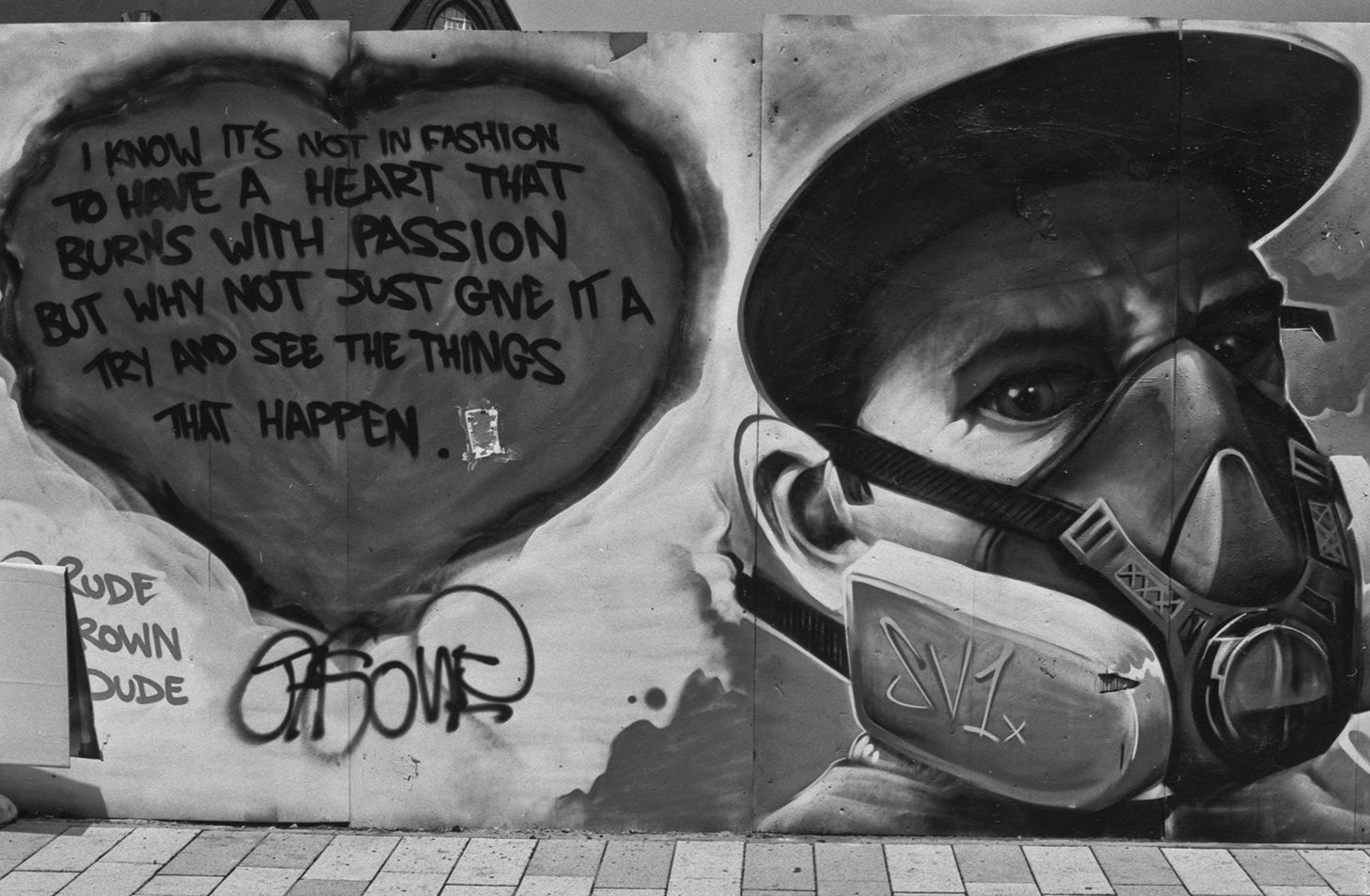
We started out asking the question as to why people don’t seem to want to buy a T70 today. Why are prices sky high for the AE1 Program, A1 and F1 whereas T70’s, which shoot the same range of lenses and arguably are more convenient, are available for £10?
Canon undeniably made some seriously robust cameras in the 1970’s and a lot of noise was made about longevity when the T series introduced not only plastic bodies but plastic gears and other components. This was seen as a backwards step – “we all know metal is superior and lasts longer!” and in some respects this is true but it does depend on which plastic you use.
The advent of plastic design had some significant advantages. Cameras could be made lighter (although the T70 isn’t!) but better than this was much lower power consumption. New shutter designs and plastic gearing in the T series enabled the use of smaller and lower powered motors which in turn changed the power consumption for the better. Little advances like this started to add up over time and when people realised that plastic wasn’t necessarily the end of build quality, things didn’t seem so bad all of a sudden.
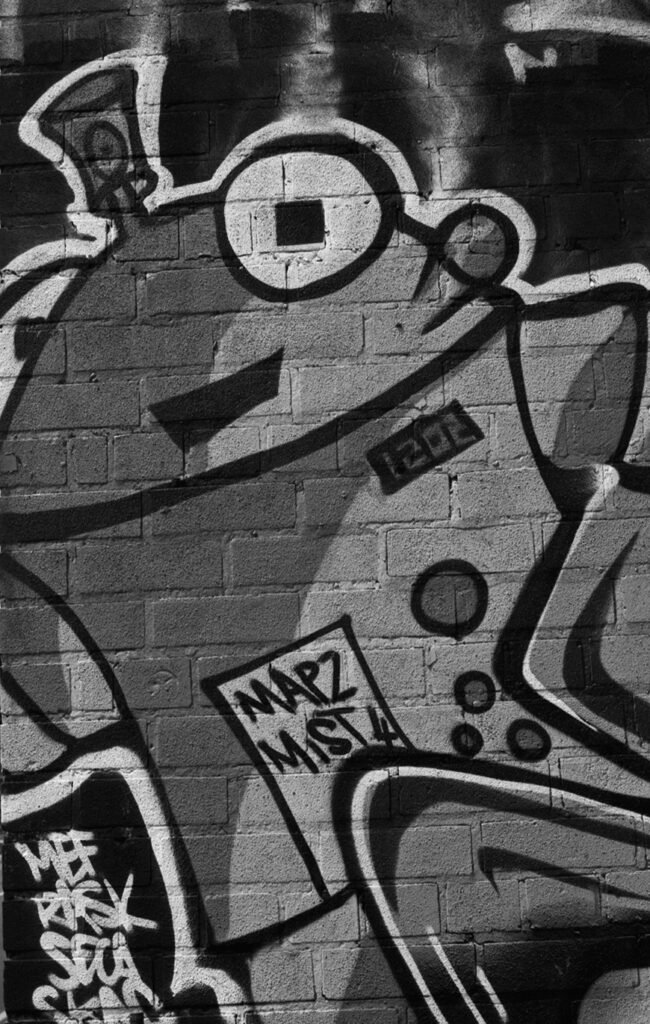
I wonder if this is part of the reason why today people are reticent to buy T series bodies. They do have a reputation for dying – the T80 is pure e-waste, the T90 kills its LCD and shutter with alarming frequency but then so does the AE1 and A1 – they’re renowned for having “sticky” electro magnets in the base of them which cause untold problems.
Perhaps it is simply down to design? The T70 is nowhere near as striking as the bold, solid, angular AE1 and I do love that look. However, I’ve also grown to love the “bold new future” language of the T series, especially the updated Canon logo and gold lettering.
If it isn’t the design then it has to be that the T70 just isn’t that exciting. When you pick up an A series you feel like you’re doing “proper” photography. Everything is solid, every button press and lever wind is meaningful and you’re in full control. The T70 is perhaps too middle of the road for many people – it isn’t quite the ticket like an EOS body in terms of how sorted their design and function is, and it isn’t old enough to give off that serious retro-cool vibe that a lot of people are after. There’s no doubt that I feel less connected to the process of shooting using a T series, but they absolutely have their place.
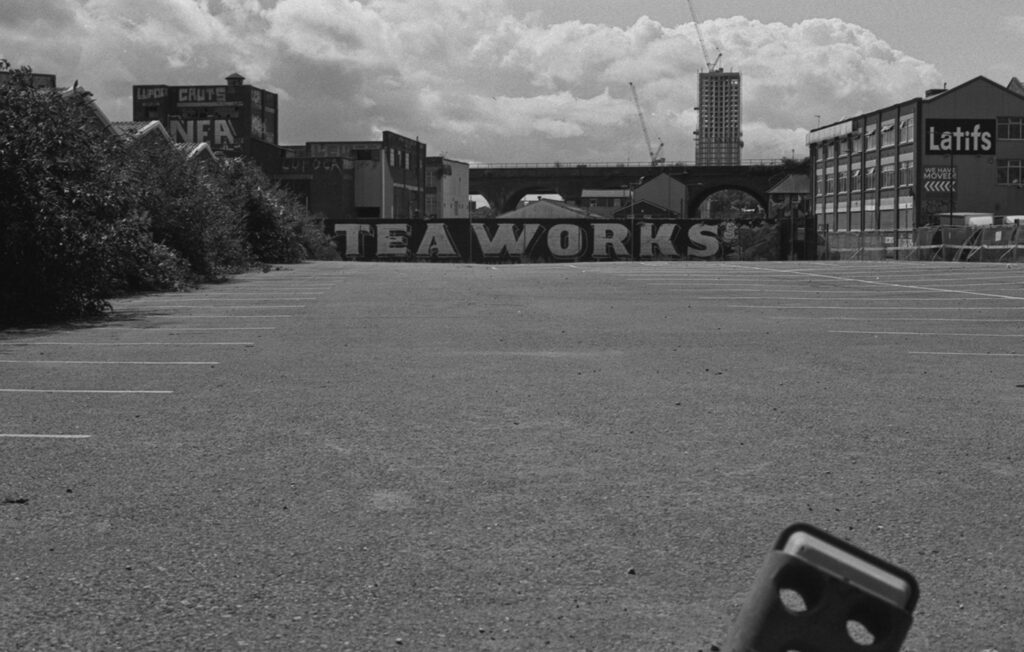
In all honesty, I’m sitting on the fence here. A year ago I’d have told you not to bother with a T70 if you wanted a manual focus camera. Now, I’m glad I have both and honestly enjoy shooting both equally but I can’t for the life of me tell you why. I now have a shelf with an AE1 Program, T70 and T90 on it and on any given day I’d happily pick up any of them but for slightly different reasons.
One concrete conclusion I can give you is that the T70 is a massively under appreciated camera. It’s extremely capable and I think in the next ten years or so the value of them will start to climb rather rapidly. If you want to experience manual focus, film SLR photography then right now this second there is no greater value option on the market and I wholeheartedly recommend you buy one. If you’re hell bent on the “full manual” approach then, of course, this isn’t for you and your wallet will need to be prepared for that journey!
I’ll be keeping my T70, which is not something I thought I’d end up saying when I bought it. Buy one – It’s cheaper than a posh pint of beer and better for your liver so you might as well.
Share this post:

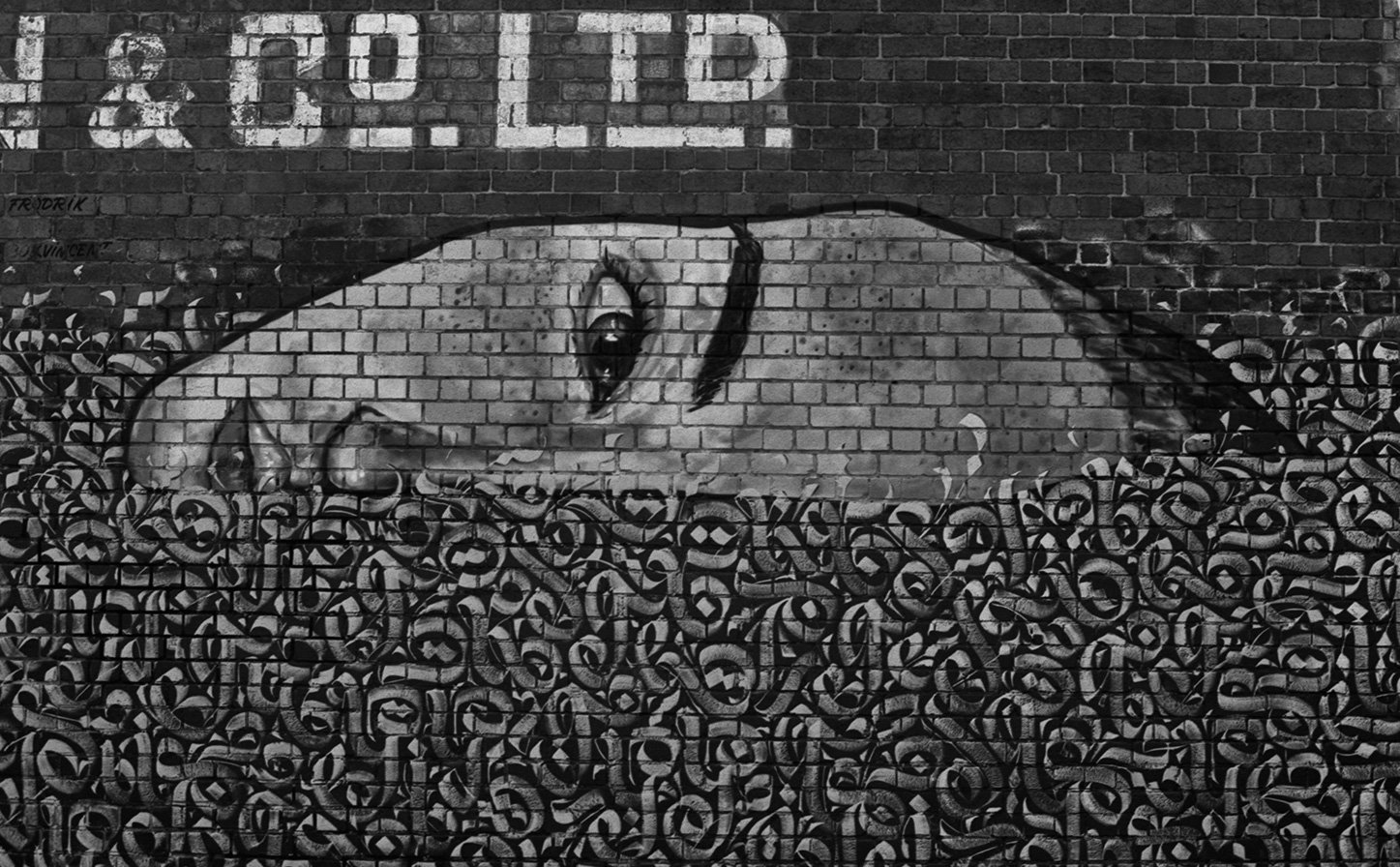
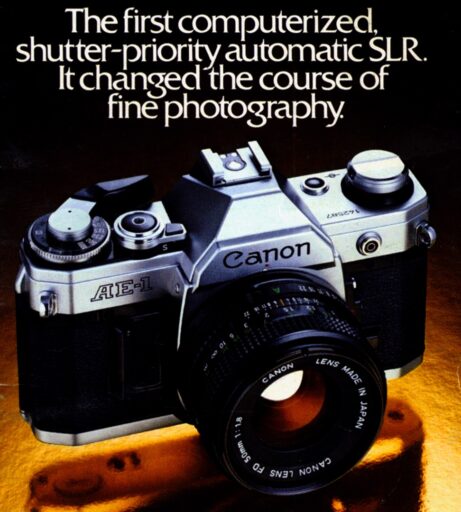
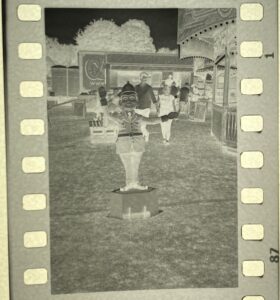


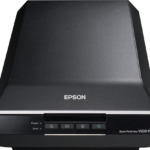
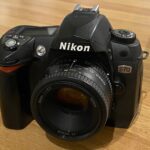

Aha, A good read, my actual progression with Canon, AE-1P, T-70 then after quite a long time with the T-70 I sold all my FD gear andoved to the EOS 5 the one with the marmite eye control focus, loved it and still have that body.
I keep thinking about picking up an eos 5…!
Recently resurrected my A1 and T70 . Certainly makes you think alot more when composing the picture!
Just NO!
I have a T70 (& A1, EF, AV1, AL1 and EOS300V) – it is a terrible camera, too large, too heavy and horrible to handle.
The A1 is the one to stop at (IMHO) before the plastic fantastics, if you like that sort of thing.
That’s a lot of effort to go to in order to seek out and disagree with some T70 content.
The beauty of film these days is you’re spoiled for choice and you can pick up whatever takes your fancy, fits your personality or style. However, it’s factually inaccurate to suggest the T70 is terrible. The image quality will be dictated solely by the lens and film – so you’ll get identical results to any other FD body with the same exposure settings. The T70 isn’t unusably heavy and certainly doesn’t weigh noticeably more than the A1 which is a unit itself. There is really no such thing as too large/too heavy – this is pure preference. Would you dismiss the EOS 1 because it is too heavy? Is the T90 terrible because it is large? No, that would be an absurd assertion to make.
I stand by the comments here and for people without the deep pockets you need to access yet another hobby which is being marginalised by “collectors” driving up prices, the T70 is a superb, affordable ticket to having… wait for it… fun.
It also begs the question, why do you have one if they’re so awful? There’s many a charity shop awaiting your generous donation and a person out there who’d love the chance to give it another life.